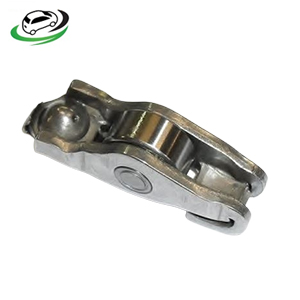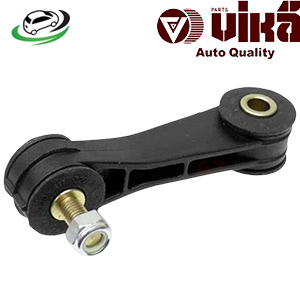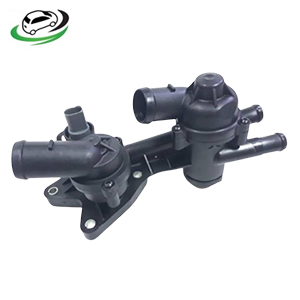-10%
Get Engine Thermostat Housing Audi A1 VW Golf EOS Tiguan Sciricco Beetle Polo 1.4TSI 03C121111P
The engine thermostat housing is a critical component in the cooling system of an internal combustion engine. It serves as the enclosure for the thermostat and acts as a junction between the engine and the radiator. Understanding the structure, function, types, benefits, common issues, and maintenance of the engine thermostat housing is crucial for ensuring efficient engine temperature regulation and overall vehicle performance.
Structure and Function of Engine Thermostat Housing
The engine thermostat housing houses the thermostat, which regulates the flow of coolant between the engine and the radiator.
Components of a Thermostat Housing
- Main Body: The primary enclosure that houses the thermostat.
- Inlet and Outlet Ports: Connects to the engine and radiator hoses, allowing coolant flow.
- Mounting Flanges: Used to secure the housing to the engine block or cylinder head.
- Gasket or Seal: Ensures a leak-proof connection between the housing and the engine.
Function in the Cooling System
The primary function of the thermostat housing is to hold the thermostat, which regulates the engine’s operating temperature. The thermostat opens and closes to control coolant flow based on engine temperature:
- Cold Engine Start: When the engine is cold, the thermostat remains closed, preventing coolant flow to the radiator. This helps the engine reach its optimal operating temperature quickly.
- Normal Operation: Once the engine reaches the optimal temperature, the thermostat opens, allowing coolant to flow to the radiator, where it dissipates heat.
- Temperature Regulation: The thermostat continuously adjusts coolant flow to maintain a consistent engine temperature, preventing overheating or overcooling.
Types of Thermostat Housings
Thermostat housings come in various types, each designed to fit specific engine configurations and cooling system requirements.
Aluminum Thermostat Housings
Aluminum thermostat housings are lightweight and offer excellent heat dissipation properties. They are commonly used in modern engines due to their durability and resistance to corrosion.
Plastic Thermostat Housings
Plastic thermostat housings are cost-effective and lightweight. They are increasingly used in newer vehicles to reduce overall weight and manufacturing costs. However, they may be less durable than metal housings under high-temperature conditions.
Cast Iron Thermostat Housings
Cast iron thermostat housings are robust and highly durable, making them suitable for heavy-duty applications and older vehicles. They offer excellent resistance to wear and tear but are heavier than aluminum and plastic counterparts.
Benefits of Thermostat Housings
Thermostat housings provide several benefits that contribute to the efficient operation of the engine cooling system and overall vehicle performance.
Efficient Temperature Regulation
Thermostat housings ensure the proper functioning of the thermostat, which is essential for maintaining optimal engine temperature. Efficient temperature regulation improves engine performance, fuel efficiency, and emissions control.
Leak Prevention
High-quality thermostat housings, combined with proper gaskets or seals, prevent coolant leaks. This ensures that the cooling system operates effectively, reducing the risk of engine overheating.
Durability and Longevity
Modern thermostat housings are designed for durability, using materials that resist corrosion, wear, and high temperatures. This longevity ensures reliable performance over the vehicle’s lifespan.
Compatibility and Ease of Installation
Thermostat housings are designed to fit specific engine models, ensuring compatibility and ease of installation. This makes maintenance and replacement straightforward, minimizing downtime and repair costs.
Common Issues and Maintenance of Thermostat Housings
While thermostat housings are designed for durability, they can experience wear and tear over time. Regular inspection and maintenance are crucial for ensuring their proper function.
Signs of a Faulty Thermostat Housing
- Coolant Leaks: Visible coolant leaks around the thermostat housing can indicate a damaged or cracked housing.
- Overheating: Frequent engine overheating may suggest a malfunctioning thermostat or a damaged housing.
- Temperature Fluctuations: Inconsistent engine temperature readings can be a sign of thermostat housing issues.
- Corrosion or Cracks: Visible signs of corrosion or cracks on the housing indicate it may need replacement.
Maintenance Tips
- Regular Inspection: Periodically inspect the thermostat housing for signs of wear, damage, or leaks.
- Proper Installation: Ensure the housing is installed correctly, with proper torque on mounting bolts and a good seal.
- Gasket Replacement: Replace the gasket or seal whenever the housing is removed to prevent leaks.
- Use Correct Coolant: Use the manufacturer-recommended coolant to prevent corrosion and ensure optimal cooling system performance.
Advances in Thermostat Housing Technology
Modern advancements in thermostat housing technology have led to improved performance, durability, and ease of maintenance.
Advanced Materials
The use of advanced materials, such as high-strength composites and alloys, enhances the durability and heat resistance of thermostat housings. These materials are designed to withstand the stresses of modern engine operation.
Improved Design
Innovative designs, such as integrated sensors and bypass valves, improve the functionality of thermostat housings. These features enhance temperature regulation and cooling system efficiency.
Integrated Thermostat Housings
Some modern engines feature integrated thermostat housings, where the thermostat and housing are a single unit. This design simplifies installation and replacement, improving overall reliability.
Follow us on Facebook for more parts.



